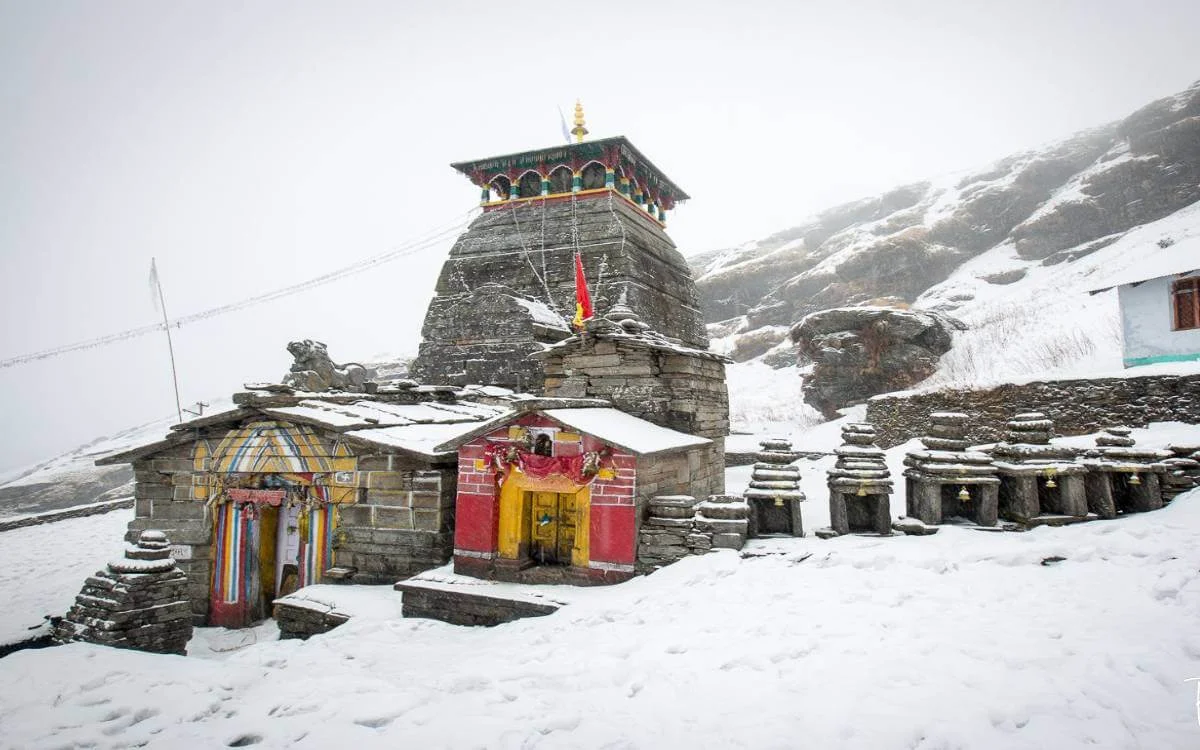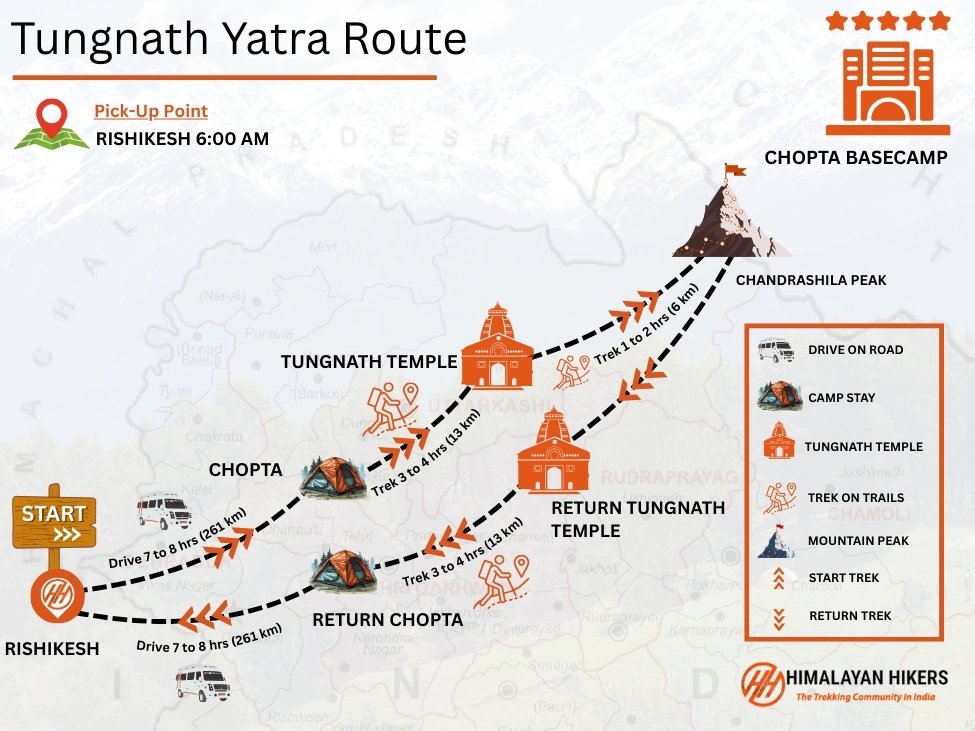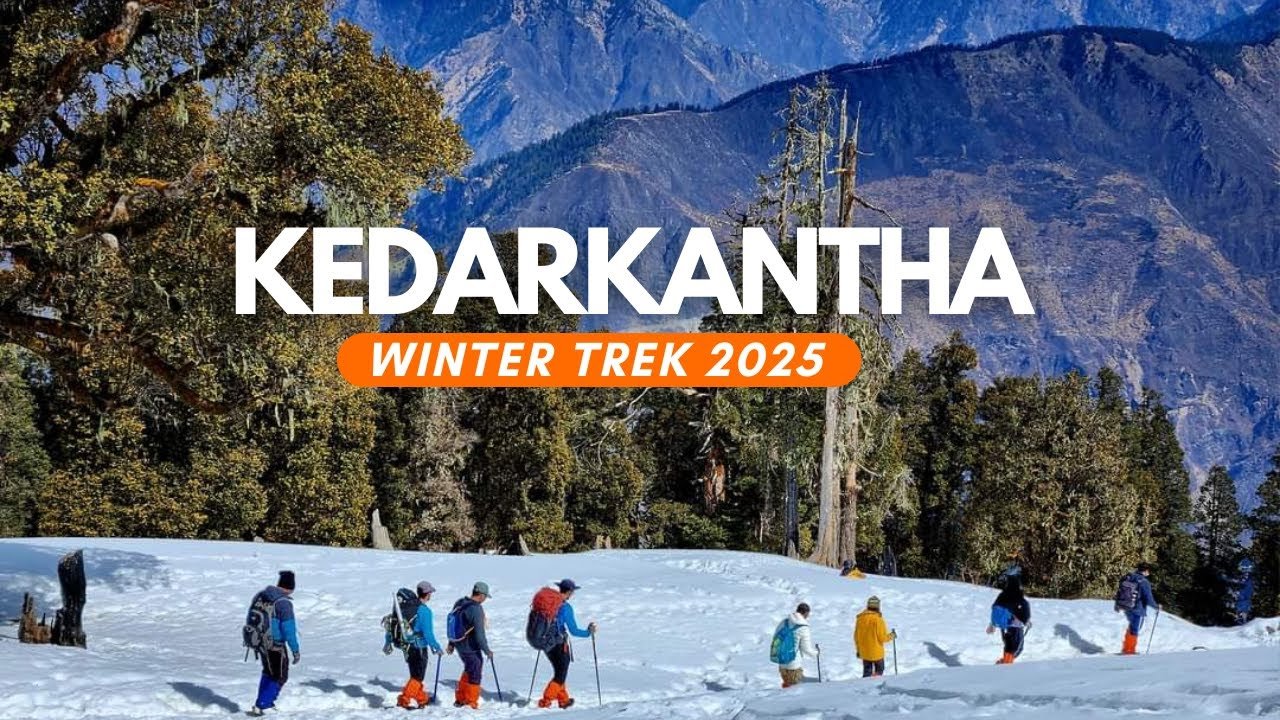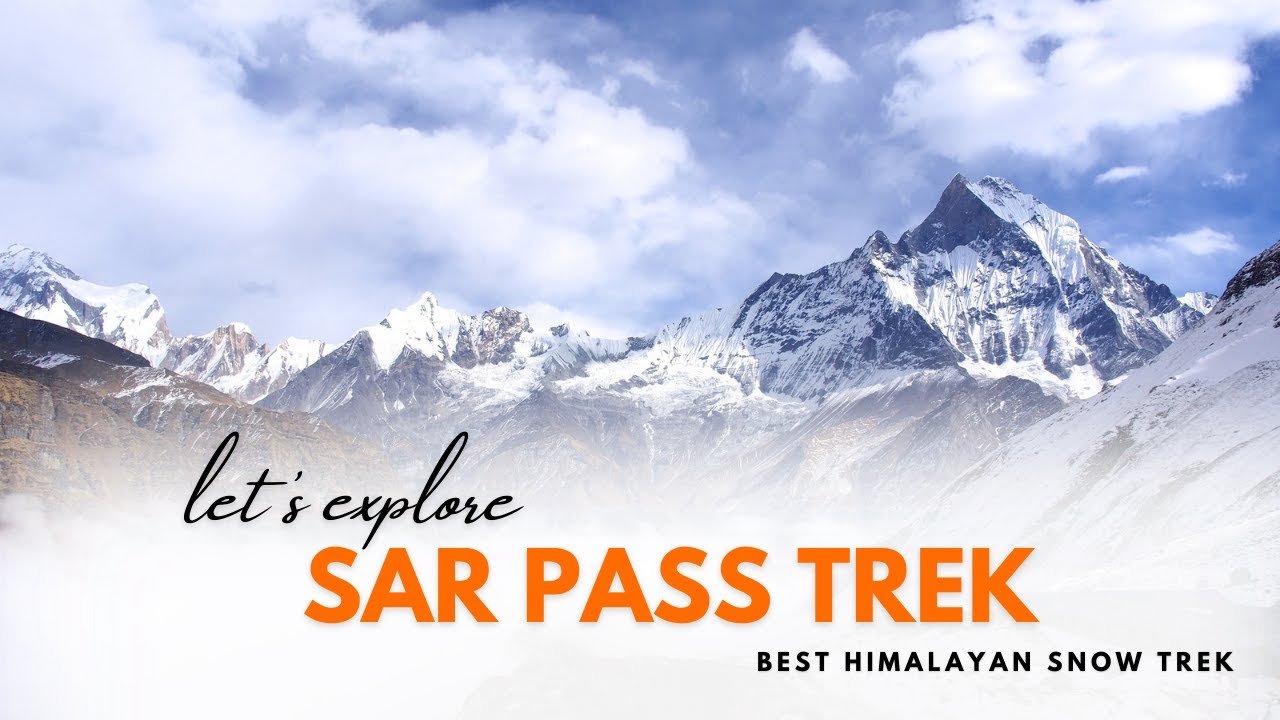The Tungnath temple is a part of the Panch Kedar pilgrimage, which comprises five temples dedicated to Lord Shiva in the Garhwal region of Uttarakhand. Legend has it that Tungnath is the place where the arm of Lord Shiva appeared after he took the form of a bull. This sacred site attracts devotees and trekkers alike, offering not only spiritual solace but also breathtaking views of the surrounding Himalayan peaks.
Tungnath trek Guide
Day 1: Drive from Rishikesh to Chopta.
Day 2: Chopta to Tungnath Temple and Chandrashila Peak
Day 3: Return to Rishikesh.
Day 1:Pickup to you from Rishikesh 07:00 am Drive to Chopta overnight stay Swiss Camp
Note: AC vehicles are only available for customized trek packages.Morning: Depart from Rishikesh early in the morning.
Travel: Journey by road from Rishikesh to Chopta. The distance is approximately 210 kilometers, and the drive takes around 7–8 hours.
Lunch: Stop for lunch en route at a roadside eatery.
Afternoon: Continue the journey, enjoying the scenic views of the Garhwal region.
Evening: Arrive in Chopta by late afternoon or early evening.
Accommodation: Check into your accommodation in Chopta.
Dinner: Enjoy dinner at a local restaurant or at your accommodation.
Rest: Relax and rest after the long journey, preparing for the trek to Tungnath Temple the next day.

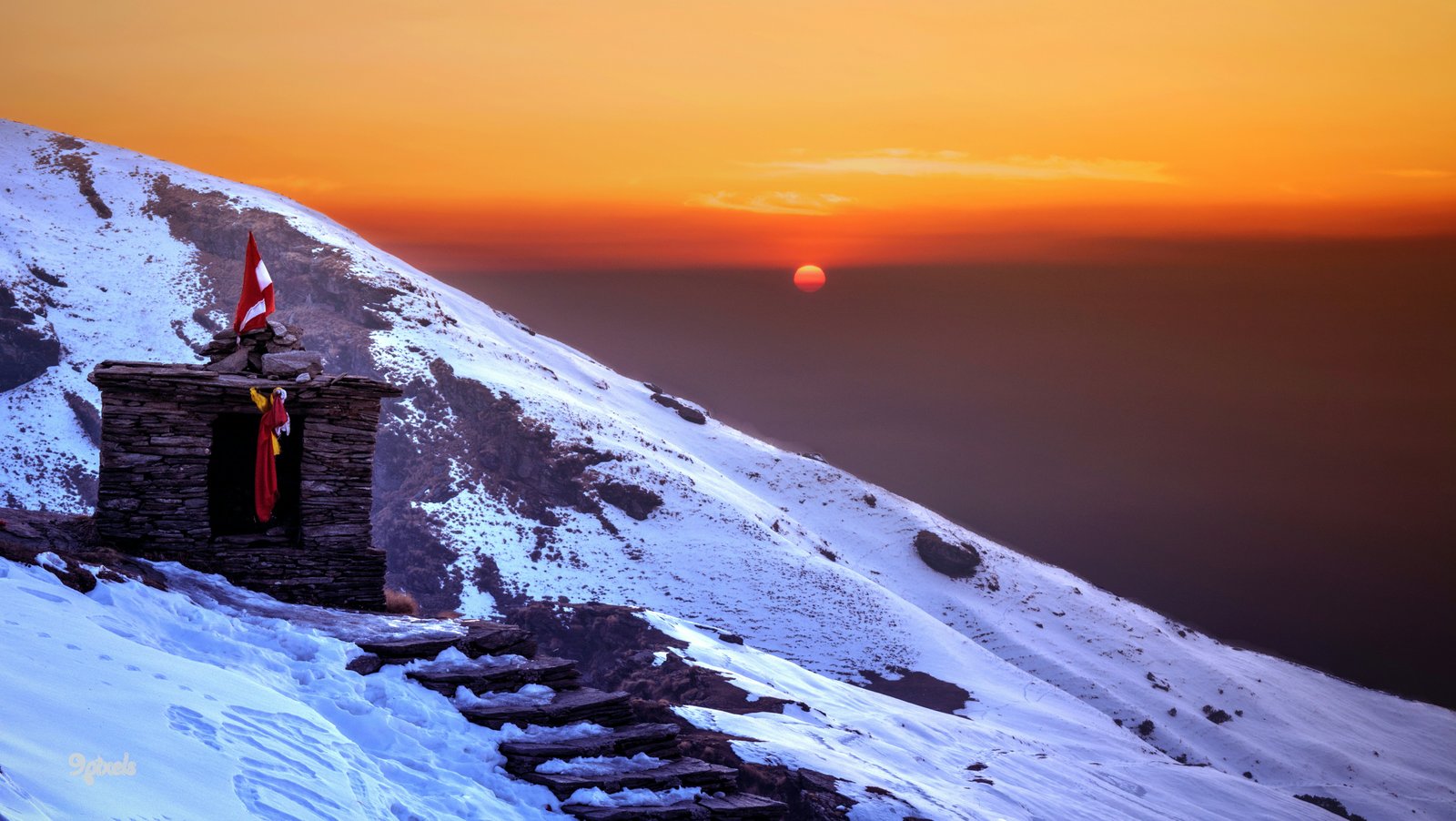
Day 2: Trek to Tungnath Temple and Chandrashila Peak back to Camp
Morning: Wake up early and have breakfast at your accommodation.
Trek Start: Begin the trek to Tungnath Temple. The trek from Chopta to Tungnath Temple is approximately 3.5 kilometers and takes around 2–3 hours.
Mid-morning: Reach Tungnath Temple, the highest Shiva temple in the world. Spend some time exploring the temple complex and soaking in the spiritual ambiance.
Trek to Chandrashila Peak: Optionally, continue trekking for another 1.5 kilometers to reach Chandrashila Peak. The ascent is steep but offers panoramic views of the Himalayas.
Lunch: Enjoy a packed lunch at Tungnath Temple or Chandrashila Peak, surrounded by stunning mountain vistas.
Afternoon: Descend back to Chopta from Chandrashila Peak.
Evening: Return to Chopta by late afternoon or early evening.
Dinner: Have dinner at a local restaurant or your accommodation in Chopta.
Rest: Relax and unwind after the trek, reflecting on the day’s experiences.

Day 3: After breakfast Return from Chopta to Rishikesh drop evening 5 to 6 pm
Morning: Wake up and have breakfast at your accommodation in Chopta.
Check-out: Check out from your accommodation and prepare for the journey back to Rishikesh.
Travel: Depart from Chopta and begin the return journey to Rishikesh by road.
Lunch: Stop for lunch en route at a roadside eatery.
Afternoon: Continue the journey, enjoying the scenic views along the way.
Evening: Arrive back in Rishikesh by late afternoon or early evening.
Accommodation: Check into your accommodation in Rishikesh.
Dinner: Enjoy dinner at a local restaurant or at your accommodation.
Rest: Relax and unwind after the journey, reflecting on the memorable trek to Tungnath Temple and Chandrashila Peak.

The Tungnath Trek is generally considered to be of moderate level. Here’s why?
Moderate Difficulty:
- Distance: The Tungnath trek from Chopta, the base camp, to Tungnath Temple, is approximately 3.5 kilometers (about 2.2 miles) one way. While not excessively long, it does require a reasonable level of physical fitness, especially considering the altitude gain.
- Altitude Gain: The Tungnath Trek height is 3,680 meters (12,073 feet) above sea level. Trekking at such altitudes can be physically demanding, particularly for those not accustomed to high-altitude environments. However, the altitude gain is gradual, allowing trekkers to acclimatize along the way.
- Terrain: The trail involves a mix of gradual ascents, flat stretches, and some steeper sections. The path passes through dense forests, rocky terrain, and open meadows, offering a varied trekking experience. While the trail is generally well-defined, there may be some uneven or rocky patches along the way, requiring careful footing.
- Weather Conditions: Weather in the Himalayan region can be unpredictable, with conditions ranging from sunny and clear to cold, windy, or even snowy, depending on the season. Trekkers should be prepared for changes in weather and carry appropriate clothing and gear.
Accessibility:
- The trek is accessible to most people with a reasonable level of fitness and no serious health issues. It is suitable for beginners as well as experienced trekkers.
- However, individuals with respiratory problems or other health concerns should consult a doctor before undertaking the trek, especially due to the altitude.
Tips for Trekking Tungnath Temple:
- Physical Preparation: Engage in regular physical exercise and cardiovascular activities to improve your stamina and endurance before the trek.
- Hydration: Stay hydrated throughout the trek, as the high altitude can increase the risk of dehydration.
- Acclimatization: Take breaks as needed to allow your body to acclimatize to the altitude. Listen to your body and pace yourself accordingly.
- Proper Gear: Wear comfortable trekking shoes with good grip, and dress in layers to adjust to changing weather conditions. Carry essential items like water, snacks, sunscreen, hat, sunglasses, and a first aid kit.
- Respect Nature: Leave no trace and respect the environment by avoiding littering and following designated trails.
Overall, while the trek to Tungnath Temple presents some challenges, it is a rewarding experience that offers stunning views of the Himalayas and a chance to connect with nature and spirituality in one of the most beautiful regions of India.
Best Time to Visit: The ideal time to undertake this trek is from all years spacily yatra season may to November Winter Trek- December to March . During winter, heavy snowfall makes the region inaccessible.
Reaching Tungnath Temple involves traveling to the base camp at Chopta and then undertaking a trek to the temple.
Here’s how to reach Tungnath Temple:
By Air:
- Nearest Airport: The nearest airport to Chopta is the Jolly Grant Airport in Dehradun, Uttarakhand.
- From Dehradun: From the airport, you can hire a taxi or take a bus to reach Chopta. The distance between Dehradun and Chopta is approximately 225 kilometers, and the journey takes around 7–8 hours by road.
By Train:
- Nearest Railway Station: The nearest major railway station to Chopta is the Rishikesh Railway Station.
- From Rishikesh: From Rishikesh, you can hire a taxi or take a bus to reach Chopta. The distance between Rishikesh and Chopta is approximately 210 kilometers, and the journey takes around 7–8 hours by road.
By Road:
- From Delhi: Chopta is well-connected by road to major cities like Delhi, Dehradun, and Rishikesh. You can either drive to Chopta or take a bus from Delhi to reach there.
- From Haridwar: If you’re traveling from Haridwar, you can hire a taxi or take a bus to reach Chopta. The distance between Haridwar and Chopta is approximately 225 kilometers, and the journey takes around 7–8 hours by road.
Trek to Tungnath Temple:
- Once you reach Chopta, you can start the trek to Tungnath Temple. The trek starts from Chopta and is approximately 3.5 kilometers (about 2.2 miles) one way.
- The trail to Tungnath is well-marked and passes through dense forests, meadows, and rocky terrain. It takes around 2–3 hours to trek from Chopta to Tungnath Temple, depending on your pace and fitness level.
- After visiting Tungnath Temple, you can optionally continue trekking for another 1.5 kilometers to reach Chandrashila Peak, which offers panoramic views of the Himalayas.
Tips:
- It’s advisable to start the trek early in the morning to avoid the heat and crowds, especially during the peak tourist season.
- Carry essential items like water, snacks, sunscreen, hat, sunglasses, and a first aid kit during the trek.
- Check the weather forecast before starting the trek and dress accordingly.
- Respect the environment and follow designated trails to minimize your impact on the fragile ecosystem of the Himalayas.
By following these steps, you can reach Tungnath Temple and embark on a memorable trekking experience amidst the stunning landscapes of the Garhwal Himalayas. – Himalayan Hikers
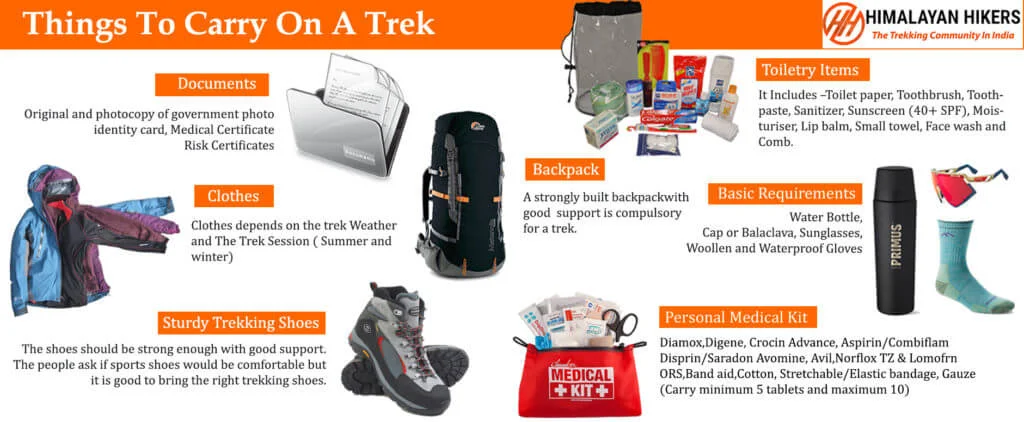
Mandatory Documents
Original and photocopy of government photo identity card- (Aadhar Card, Driving License, Voters ID, etc,)
Passport and Visa important to foreigners
Medical Certificate (First part should be filled by the Doctor and Second part by the Trekker)
Declaration Certificates
Note: – Many trekkers commit the same mistake of carrying unnecessary items on a trek which only makes the backpack heavy. It is important to know the right items to carry. It differs from season to season if you are trekking in summers then carry less layers of warm clothing and if you are trekking in winters carry enough layers to protect yourself against chilly cold.
Necessary Items for trekkers
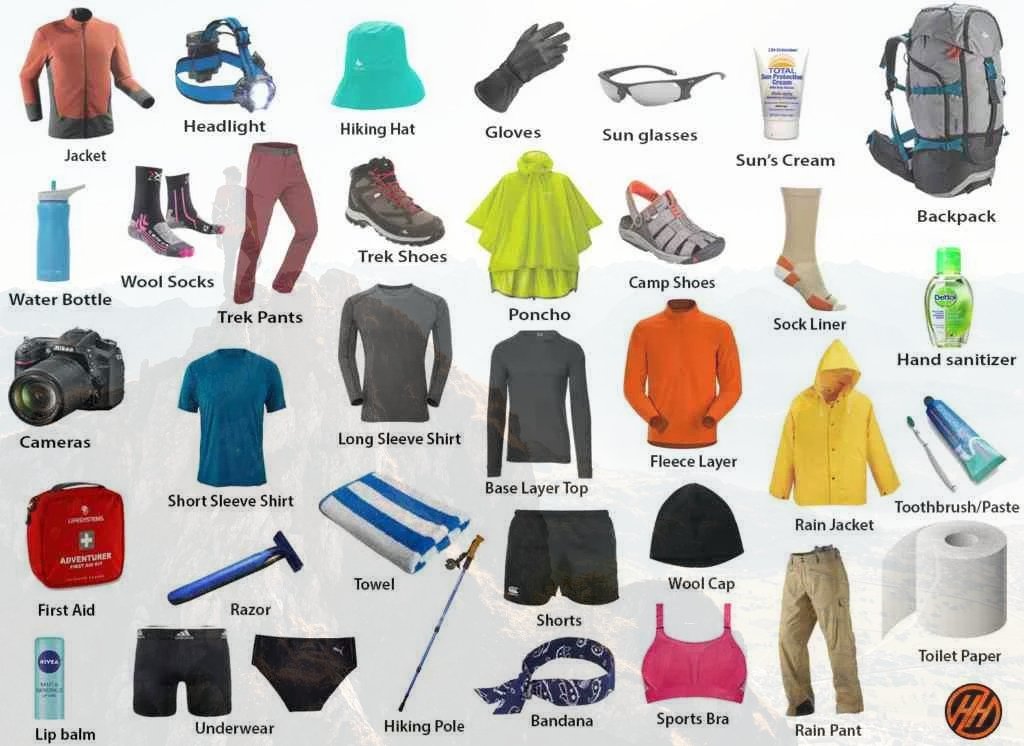
Basic Trekking Gears

The Clothes You Should Bring On On Tungnath Trek
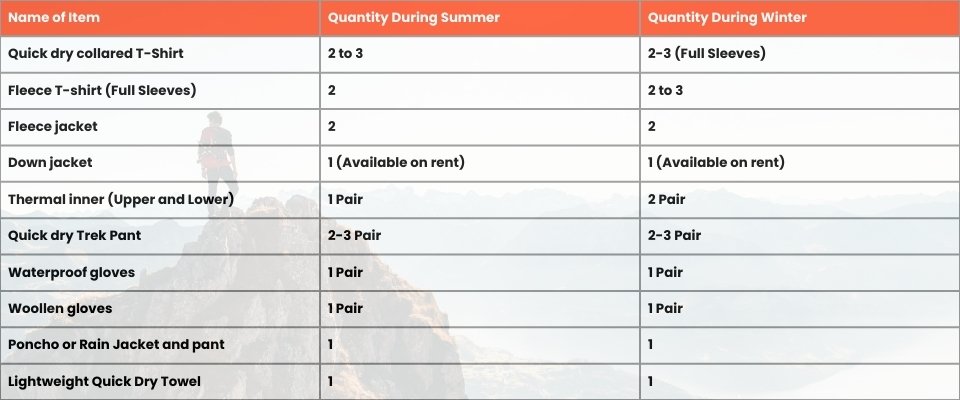
Head Gears

Foot Gears

Personal Care Essentials

Carry a Personal Medical Kit

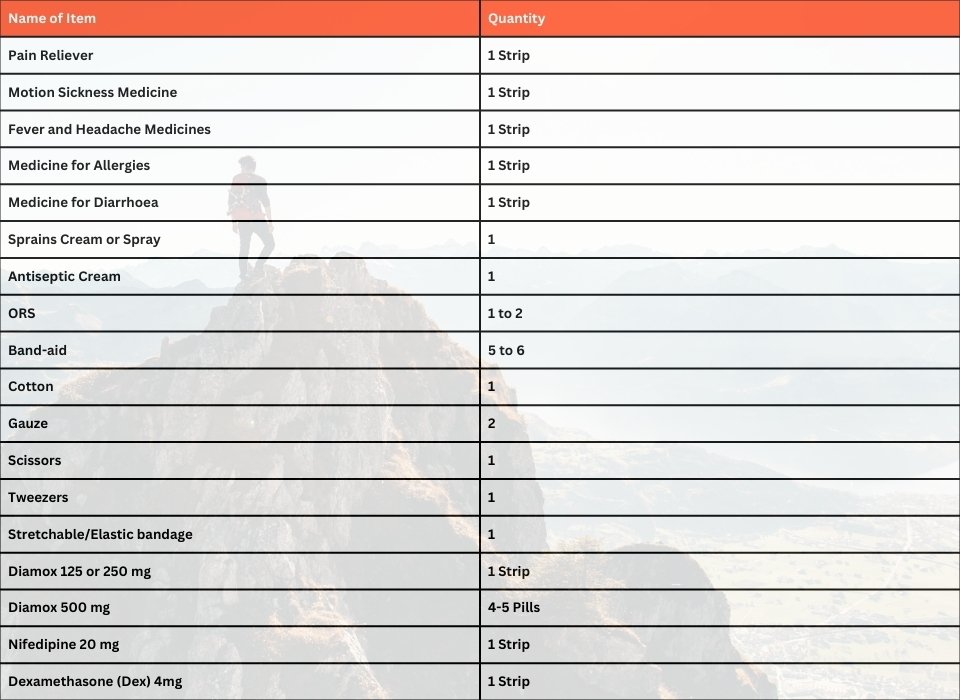
Are you Looking for Trekking Equipment on Rent?
If any trekker requires trekking equipment on rent, Himalayan Hikers offers the best-quality gear available for rental. Many individuals are in need of such equipment, and renting provides a cost-effective solution, allowing them to access high-quality gear at an affordable price without the need for a significant investment for short-term use.

Trek Equipment You can book directly on first day at the Sankri Base Camp.
Note:-
Please take all medicines only when prescribed by the doctor. In case you face any problem during your trek,
discuss and take advice from the Professional guide.
Himalayan Hikers is a reputable trekking company that places a high priority on safety. Here are some of the safety measures they take to ensure the safety of their clients during the Yatra:
Experienced Guides: Himalayan Hikers hires experienced and certified guides who are well-versed in the terrain, weather conditions, and local culture. These guides have first-hand knowledge of the routes and are equipped to handle any emergency situations that may arise.
Proper Gear: The company provides all the necessary gear and equipment to their clients to ensure comfort and safety during the trek.
Hygiene and Sanitation: Himalayan Hikers places great emphasis on hygiene and sanitation during the Yatra. They provide clean drinking water, hand sanitizers, and toilet tents to ensure that their clients are healthy and comfortable.
Emergency Services: The company has a well-defined protocol for handling emergency situations. They have a team of trained medical professionals who are available 24/7 and can be quickly mobilized in case of an emergency.
Acclimatization: Himalayan Hikers follows a gradual acclimatization process during treks to ensure that their clients adjust to the high altitude gradually. They also monitor the health of their clients regularly and provide necessary medical attention if required.
Overall, Himalayan Hikers places a great emphasis on safety and takes all necessary measures to ensure the safety and well-being of their clients during treks.

